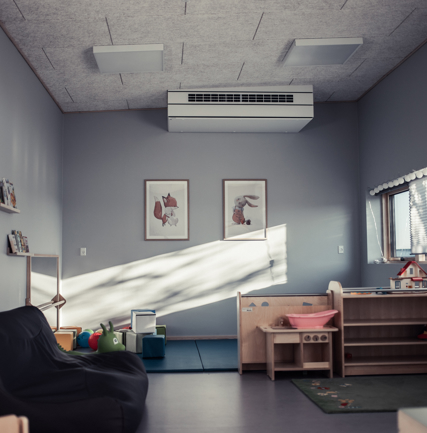Poor indoor climate is a significant challenge for many employees in the Norwegian labour market, according to a new survey conducted for GK. From hospitals and schools to nurseries, cultural buildings and shopping centres: the problem is broad, and the consequences are many.
What actually causes the poor indoor climate, and how common is it? And not least – what can Norwegian workplaces do to ensure increased well-being and productivity?
The new indoor climate survey in brief
The survey was carried out by Respons Analyze for GK in May 2023, with the aim of surveying how satisfied Scandinavian employees are with the indoor climate at work. The survey is based on data collected from a total of 3,217 employees in the age group 18–66.
The participants were randomly selected, with an even distribution of geographical location, age, and gender. The numbers were also weighted according to population figures.
What are the causes of poor indoor climate at the workplace?
According to the survey, it is primarily poor or insufficient ventilation that is the cause of poor indoor climate at work. As many as 45% report this as the most important reason. At the same time, 29% report that high indoor temperatures are a challenge, while 24% believe the indoor temperature is too low.
Poor cleaning is also cited as a reason for poor indoor climate (20%), as well as exhaust and pollution from outside (13%). Untreated mould and moisture damage are also a challenge (9%), and the same applies to a lack of competence among staff responsible for operations (11%).
The indoor climate affects health and productivity
Among the Norwegian participants in the survey, a variety of health problems are reported as a result of poor indoor climate. A total of 49% of the participants experiencing health challenges report feeling heavy-headed. For 30%, headaches are involved.
Respectively, 36% and 34% are troubled by sweating/overheating or feeling cold, while 35% experience a decrease in their ability to concentrate. It is also not unusual to experience a dry and irritated throat, or a cough, which 20% report.
The physical symptoms may, not surprisingly, lead to a loss of productivity at work. 44% state that they become less productive as a result of the indoor climate. For 7% of the participants, indoor climate leads to increased sick leave, and 25% report a worsening of mood.






